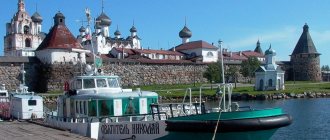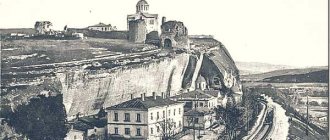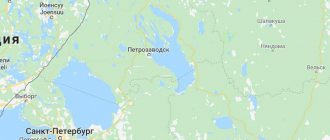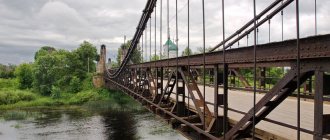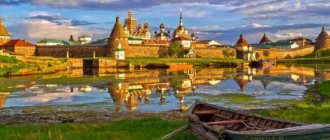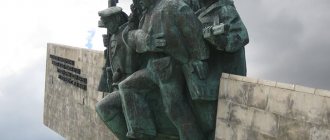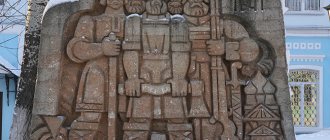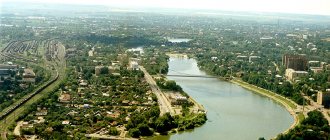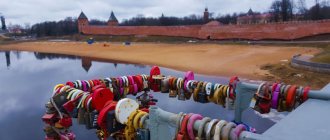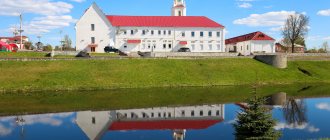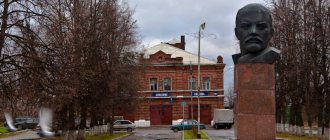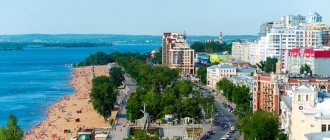Where is the historical complex of islands located on the map of Russia?
The question often arises: in what area are the islands located and asked to show them on the map. The Solovetsky Islands are located in the northern zone of the European part of Russia and belong to the Arkhangelsk region. The archipelago is located in the White Sea, at its entrance to Onega Bay. The distance from the islands to the Arctic Circle is just over 160 kilometers.
Solovki is a natural museum-reserve, a specially protected area, which is included in the UNESCO World Cultural Heritage List.
In the search form below you can see the cost of train tickets:
History and legends
Most of us know Solovki for two reasons: holy places and Gulag prisons. However, the history of this place begins several thousand years before the events mentioned. The earliest sites of primitive people on the Solovetsky Islands date back to the third millennium BC. Although finds on the island of Bolshaya Muksalma indicate a period of 6-7 thousand years ago.
At that time, the ancestors of the Sami and Karelians used the Solovetsky Islands as hunting grounds and temporary summer settlements. The lands of the archipelago also served as a sacred ritual place. The dead were buried here, making mounds of cobblestones and laying out ritual labyrinths on the ground, which have been perfectly preserved to this day.
With the development of Russian lands in the 11th century, the Novgorodians turned their attention to the White Sea coast. The Solovetsky lands were rich in seals, and the sea waters were rich in commercial fish. The first “colonizers” of these places were Orthodox monks. To retire from the world, they went to the islands of the archipelago and built modest hermitages here. Novices followed the monks and gradually infrastructure and religious buildings began to appear on Solovki.
The first monastic settlement on the archipelago dates back to 1429. In 1436, the main symbol of Solovki, the Spaso-Preobrazhensky Monastery, was built here. In the following years, several churches, refectory and outbuildings appeared on the territory of the monastery. The monks built dams, dug canals between the many local lakes, paved roads and planted meadows by hand.
The Solovetsky Islands complex acquired a special status in the second half of the 16th century during the reign of Ivan the Terrible. Then, during the Livonian War, the Swedes were attracted to the northern Russian lands. To protect the domestic territory from foreign invaders, a fortress wall was erected around the monastery, and behind it a garrison with a governor was stationed.
Since then, Solovki has become an important fortress, which more than once defended the entrance to Onega and the Arkhangelsk lands. The local walls were so strong and impregnable that even the archers, who came here to break the resistance of opponents of Nikon’s church reform, could not take them for 8 years. After 8 years of unsuccessful assault attempts, they managed to get inside only because of the monk who betrayed the monks!
Along with its religious and military functions, since 1554 the Solovetsky Monastery served as a prison for unwanted political opponents. Over the next 4 centuries, about 550 prisoners were imprisoned in local cells. Later, a separate prison building was even built for them.
At the beginning of the 20th century, the Soviet government also returned to the idea of a prison on the territory of Solovki. Here they set up SLON - Solovetsky Special Purpose Camp, through which thousands of prisoners passed. However, with the beginning of the Russian-Finnish War, the camp was disbanded, and the territory of the archipelago was transferred to the jurisdiction of the Northern Fleet.
Solovki became a tourist attraction in 1967, when, after the restoration of historical buildings, a museum-reserve opened here. In 1990, the religious function was also returned to the historical and cultural complex. And in 1992, UNESCO recognized the archipelago as a World Cultural Heritage site.
When is the best time to go on this trip?
The proximity of the Arctic Circle largely determines the climate of the area in which the Solovetsky Islands are located. Frequent winds, high humidity, sudden temperature changes - this is what you can encounter when visiting Solovki.
However, the islands have their own characteristics. Winters are mild, autumns are warmer than springs, and summers are quite cold. July is the warmest month of the year on the islands, the average temperature is about +10 °C, it is best to visit the archipelago at this time. In February, it is better not to come to Solovki; you can experience the lowest temperatures – about -11 °C.
Islands of the archipelago
The Solovetsky archipelago consists of six large and about one hundred small islands. The main buildings and infrastructure are concentrated on Bolshoi Solovetsky Island, the largest in the entire White Sea. Its length from north to south is 24.7 km, and from west to east - 15.8 km. In the central part of the island there are many hills with the highest mountain Sekirnaya (73.5 meters above sea level). The island contains the vast majority of lakes, a lot of marshy areas, picturesque headlands and bays.
The second largest island of the archipelago, Anzersky, is five times smaller than Bolshoi Solovetsky. Its area is only 47 km². It is located east of the rest of the group of islands and is separated from them by the wide Anzerskaya Salma Strait. The island's territory is predominantly swampy and covered with pine forests. However, the most ancient monasteries are located here - Holy Trinity (XVII century) and Golgotha-Crucifixion (XVIII century). Since the beginning of the 2000s, both monasteries have resumed their activities.
The next largest island of the archipelago, Bolshaya Muksalma, is also located east of Bolshoi Solovetsky Island and is connected to it by an ancient dam. Its area is 17 km², the territory is mainly covered with swamps. There are no lakes or forests here. However, since the mid-16th century, the island was used for cattle breeding. Here was the Sergiev-Radonezh monastery with pastures, farmyards, poultry houses and stone household buildings. Since 2010, restoration work began at the monastery. From here you can cross the strait to the island of Malaya Muksalma (area 0.57 km²), where the oldest building on Solovki is located - the Chapel of the Nativity of Christ.
To the west of the Big Solovetsky Island are the Big and Small Zayatsky Islands. Their area is 1.25 km² and 1.02 km² respectively. There are no swamps, lakes or forests - just tundra with low-growing bushes and grasses. However, it is on these islands that those ancient labyrinths are located. You can get to the Zayatsky Islands by boat. The road from the village of Solovetsky will take 45 minutes.
How to get there?
There are several ways to get to the Solovetsky Islands on your own.
Get there by sea
Marina in Rabocheostrovsk
It is convenient to get to Solovki by sea from Kem by boat or private boat.
You can get to Kem by car through the Republic of Karelia along the P-21 highway from Moscow or St. Petersburg, or you can choose any train that goes to Murmansk. The train will take you to the village of Rabocheostrovsk, from where you will need to take a taxi or bus No. 1 to the pier.
Near the pier in Rabocheostrovsk there is a paid guarded parking lot where you can leave your car.
The ship departs twice a day, at 8:00 and 12:30, the journey time is about two hours. They operate from June 1 to August 31. Private boats are booked in advance. You can find out the schedule, cost and order a ticket online here.
A boat also runs from Arkhangelsk from June to September, but only twice a month. He is on the road for more than a day, so this option is not the most convenient.
Trip from Moscow to Rabocheostrovsk
The map shows the road route from Moscow to the pier in Rabocheostrovsk. The map can be viewed on the website or
Automobile route St. Petersburg-Rabocheostrovsk
The map shows the road route from St. Petersburg to the pier in Rabocheostrovsk. Can
By plane
From April to October, from two airports in Arkhangelsk, Talagi and Vaskovo, you can reach Solovki in less than an hour. The exact schedule must be clarified on the website of the airline, which organizes flights several times a week, or on the website of Arkhangelsk Airport.
You can find out the flight schedule here:
Excursions to the Solovetsky Islands
An island with such unique nature can be walked through many different paths and routes, depending on what you want to focus your attention on. One of the hiking trails is called “Phenomenon of Solovetsky Nature.” It comes in two versions.
The first version of the walking tour is designed for 5 hours, its length is 5 km. It starts from the Filippovskaya Chapel (Severnaya St., 5), in the Solovetsky village, then along the route there are the Filippovsky Gardens, then the Melnichny Stream, from there tourists go to the seashore, return from the coast, go to the Kumuzhey Stream, then to Lake Bolshoye Kumuzhye, then explore the High Bog, Primorsky Meadow, and then head to Cape Tolstik - only about 5 km one way. You can return back to the village by bus.
The second option of the excursion involves traveling from the village to Cape Pechak on foot or by bicycle. The excursion is longer, because There are 9 km to be covered. During these excursions you can explore the unique nature of the island without fear of causing irreparable damage to it, because... The excursion is conducted under the guidance of an experienced instructor. In addition, there is no danger of getting lost or going astray.
Another interesting object for a tour of Solovki is the so-called Dry Dock. This is a dock located on the canal that leads water from the Holy Lake to Blagopoluchiya Bay. The dock consists of two swimming pools. The first distributes and regulates the water supply to the main lock part - it is connected to the sea through special gates. To the south of the dock is a dry dock platform. It is located above sea level. The ships sailed into a special huge pool, and then water flowed there from the water distribution pool by gravity through an underground channel. The rising water level lifted the ships to dry dock level. Here the ships were strengthened with a system of supports used in shipbuilding, the gates were opened, and the water flowed into the sea. In dry dock, the ship could be repaired, and new ones could also be built. These are the magnificent engineering structures the monastery possessed! A real fortress in the Far North of Rus'.
At the beginning of the 20th century, or more precisely, in 1909, a real hydroelectric power station was built on Bolshoi Solovetsky Island. The powerful hydraulic system that was built on the island earlier (70 canals, most of them man-made, about twenty dams and dams, locks) made it possible to do this. Currently, both the hydroelectric power station and the entire hydraulic system on the island are destroyed and have fallen into disrepair. Although there are restoration projects that require large investments.
In addition to unique natural landscapes, the Solovetsky Islands also have a real Botanical Garden. Here, in a polar climate, garden strawberries, apple and cherry trees, and thick lilacs grow. A very rare type of rose, the “Himalayan wrinkled”, also grows here. During flowering, thousands of large crimson buds emit an incomparable intoxicating aroma. They say that this is a gift from distant Tibet. In total, there are more than 500 species of plants in the garden; there are even very old apple trees, which are more than 100 years old, but which still bear fruit - the gardeners care for them so skilfully.
In the garden, surrounded by groves of beautiful cedars and larches, the air is incredibly clean. The garden is located just 4 km from the monastery. In good weather it is pleasant to walk there. The garden was founded in 1822 by Archimandrite Macarius. He chose a secluded place, protected from the winds, where he planted a garden for the glory of God.
The Solovetsky archipelago is located almost at the Arctic Circle, so here in winter daylight hours last 2-3 hours. On the shortest day, night reigns for 22 hours! In summer, the opposite is true. In June, light does not leave the sky for 22 hours. The remaining 2 hours in the sky you can watch a beautiful sunset, smoothly flowing into the sunrise. In addition, in winter the days are often cloudy and gloomy, so that it feels like there is no day at all. In the summer, mainly in June-July, the sky is very rarely clouded, the sun shines brightly, so this is the most favorable time to explore the islands. However, it must be taken into account that air from the Arctic can invade the territory of the archipelago, and even in summer it can become sharply cold.
And yet, perhaps, some of the most interesting sights of the Solovetsky Islands are associated with the veneration of Christianity. The most revered place is Sekirnaya Mountain. It is believed that the first monks, Herman and Savvaty, landed here. In 1429, having decided to create a monastery, they erected a worship cross and founded a small cell. The name of the mountain was born precisely then; it was named so because here Herman and Savvaty used axes (axes) to cut down the forest to build a monastery. In addition, the name of the mountain is associated with a miracle that happened in the 15th century, when two angels in the form of bright-faced youths carved the wife of a fisherman who, together with her husband, wanted to build a hut near the monks’ cell. So they made it clear to her that the Lord himself protects the monks, their peace and prayerful concentration.
In the 17th century, Metropolitan Ignatius proposed to Solovetsky Archimandrite Firs to build the Church of the Holy Ascension on the mountain. In the 19th century, the Holy Ascension monastery was built. The most interesting temple on Sekirnaya is the Church of the Ascension of the Lord. This is a stone single-domed temple, due to its elevated position and white color it is visible from afar.
It was built according to the design of the architect Shakhlarev. The temple has two aisles. The chapel of the first tier is in honor of the Archangel Michael of the Miracle in onekh. On the second tier, in fact, there is a chapel in honor of the Ascension of the Lord. The third tier is a belfry, crowned by a lighthouse, the light from which was and is still visible from afar. This light also symbolizes the spiritual light of the Solovetsky monastery. It is interesting that this monastery, just like other monasteries of the archipelago, also played an economic role. On the territory of each of the monasteries, some kind of product was prepared. Berries were harvested in Svyato-Voznesenskoye. Vegetables were harvested at the Savvatievsky monastery - it was a vegetable garden monastery. Isakovsky monastery was a fishing and haymaking monastery. The role of the sea gate of the archipelago was played by St. Andrew's monastery on Bolshoi Zayachiy Island. On the island of Bolshaya Muksalma they kept cattle - there was a barnyard there. The Sergius-Radonezh monastery was allocated for it. On the island of Anzer there were two monasteries - Trinity and Golgotha-Crucifixion, in which hermits and desert dwellers lived.
There are also sad excursions around the islands. Let's not forget about the special purpose camp and prison that were here during Soviet times. The Solovetsky Museum-Reserve has an exhibition “Solovetsky Camps and Prison 1920-1939.” It is located in the building of a former camp barracks on Zaozernaya Street. Various objects and documents, letters and historical evidence tell about the terrible and tragic events of that time. Having visited the exhibition, which was opened not so long ago - in 2010, you can name many of the victims here by name and honor their memory.
In order to get acquainted with the ancient history of the Solovetsky archipelago, it is best to visit Anzer Island. It is here that the oldest sanctuaries of the inhabitants of the White Sea region are located - on Cape Gorodki (Labyrinths) there is a stone labyrinth surrounded by conical boulders. There is also an abandoned ancient dugout. What rituals and who performed them here in ancient times? A little further on there is a 19th-century fishing hut with an outbuilding nearby. The place is marked by a rock standing in the surf, which is called Petrov Gorodok. This outlier rock has a distinct pyramid shape.
There is also a large pagan temple on Cape Kolguev (this is the eastern part of Anzer). There are huge boulders, worship crosses, mysterious wells, and Sami burial grounds. The mysterious and mysterious power of these places attracts tourists here.
Very interesting are the pagan buildings of the Neolithic era that have been preserved not far from the St. Andrew’s Hermitage on Bolshoi Zayatsky Island. These are again stone labyrinths - mysterious, keeping, according to mystics, a certain secret of entering the otherworldly reality. Maybe this is really so, because they are laid out in such a way that the entrance is at the same time the exit, and their shape is a spiral - a single code that underlies all living things, a symbol of life, movement, the universe. There are many such stone labyrinths in northern Europe, which undoubtedly requires unraveling the messages that ancient cultures encrypted in their mysterious structures.
Getting to Anzer Island is very difficult. It is separated by straits with stormy currents; there is not even a pier on the island; you can only land on it from boats. In addition, an excursion there is possible only with the permission of the Solovetsky Museum-Reserve. Since there is an active monastery there, in which there are people seeking spiritual solitude and purification, such severity is quite appropriate. However, if you are determined, then it is best to seek help in organizing an excursion at the museum.
Architectural and artistic monuments
The monastery buildings are scattered across four islands of the Solovetsky archipelago. The architectural ensemble of the Solovetsky Monastery itself is located on the shore of Blagopoluchiya Bay on the Big Solovetsky Island.
The pentagonal territory of the monastery is surrounded by massive walls (height - from 8 to 11 m, thickness - from 4 to 6 m) with seven gates and eight towers, built in 1584-1594 by the architect Tryphon. The walls are built from huge stones up to 5 m in size, their length is 1084 m.
On the territory of the monastery, churches and other monastic buildings have been preserved, connected by covered passages, surrounded by residential and utility premises:
- The three-domed Assumption Cathedral (1552-1557) with a huge refectory (475 sq. m.) and cellar chambers;
- Transfiguration Cathedral (1558-1566), two-pillared, five-domed, on a high basement, with pyramidal sloping walls, from which enemy cannonballs were supposed to ricochet;
- Church of the Annunciation (1596-1601),
- stone chambers (1615),
- water mill (early 17th century),
- bell tower (1777),
- Nicholas Church (1834),
- Trinity Church (1856-1859).
Both cathedrals date back to the time of the most famous abbot of the monastery, Philip (in the world Fyodor Kolychev). They have a stern, almost serf-like appearance. The thickness of the walls of the Transfiguration Cathedral reaches 5 m, and its corner aisles resemble fortress towers. The architectural design of the cathedral is unique: the corner chapters are placed above the upper aisles, which are placed on vaults and connected to each other by passages. Assuming the once existence of a hipped roof, Mikhail Ilyin classifies the Solovetsky Cathedral as one of the “tower-tent monuments of Grozny,” while Andrei Batalov believes that the architecture of the cathedral embodied the same Grozny idea of multiple altars that gave birth to St. Basil’s Cathedral.
The original three-row iconostasis of the Transfiguration Cathedral is believed to have consisted of 20 boards and was taken from the monastery by the Old Believers after the “Solovetsky Sitting”. In 2001, a resident of Vilnius announced that he was the owner of seven iconostasis boards and set a price for them of 1,700 thousand euros; At the same time, the icons were put on display in Groningen. In 2005, Russian Minister of Culture Alexander Sokolov, having considered the issue of purchasing the iconostasis, announced that the state was not interested in purchasing the relic, since the monument, according to the conclusion of the restorers, was “not authentic.” In 2007, it was reported that the authenticity of the iconostasis had been confirmed by unnamed experts.
In 1923, there was a big fire in the monastery bell tower, some of the bells even melted. The long spire of the bell tower burned down. The administration of the camps did not carry out restoration and instead of the discarded cross over the dome of the bell tower, they decided to install a star welded from metal structures. In 1985, the star was removed and is now kept in the Solovetsky Museum. In 2003, a full-scale reconstruction of the bell tower spire began. In 2006, the restoration of the upper part of the bell tower was completed. The scaffolding was removed from the completely restored spire and a new 4-meter titanium cross was erected.
In front of the monastery, two chapels have been preserved, Alexander and Petrovskaya, installed in the mid-19th century in memory of the visit of the monastery by Tsars Peter I and Alexander II. At the entrance to the monastery, on the wall there is a very rare design element for the Orthodox tradition - a sundial.
By plane
Perhaps this is the most convenient way to get to the islands with a minimum of transfers. Solovki has its own small airport that receives small aircraft.
In winter, there is no way to get to the islands except by plane.
There are no direct flights yet; you will have to make a transfer in Arkhangelsk.
Planes depart from the following capital airports:
Flights are operated by various airlines. This is very convenient: you can choose the most suitable flight conditions for yourself.
Travel time will take about 2 hours.
A flight to Solovki departs from Arkhangelsk three times a week.
Departure time: 12.40. Travel time is 50 minutes.
Flights are operated by Nordavia airline.
On a boat
In the summer, communication by water is established between Moscow and Solovki.
You can also get there by water from
getting there in any way convenient for you.
From Moscow
Motor ship "Rus the Great"
It goes directly to Solovki, stopping at various interesting places along the way.
From Arkhangelsk:
The motor ship "Belomorye" makes only a few trips during navigation. It calls at various Pomeranian towns and villages and moves rather slowly.
If you decide to travel on this ship, it is better to find out all the details at the Arkhangelsk port information office.
From Belomorsk (Fish Port):
- Departure time – 08.30
- Travel time – 3 hours
- Ticket price – 1200 rubles
From Kemi:
- motor ship "Vasily Kosyakov" Departure time - 08:00
- Departure time 12:30
Tickets are issued by the administrator at the port of Rabocheostrovsk.
The approximate cost of travel is 1200 rubles. For children under 12 years old there is a 50% discount on tickets
Boarding on local ships ends 30 minutes before departure. In case of unacceptable weather conditions (storm of 4 points) all flights are cancelled.
By train
If you don’t like to fly, there is another great option to get to the Solovetsky Islands – the train.
True, you won’t be able to get to the islands themselves. You will need to get off at Kem station. From the port of Rabocheostrovsky, which belongs to Kemi, motor ships go to Solovki in the summer.
Trains from Moscow to Kem depart from the following stations:
To get to Kem, choose trains in the Murmansk direction.
Travel time is about 1 day.
See ticket prices and exact schedule here.
Architecture of the Solovetsky Monastery
The bases of the cone-shaped towers, ending with high tents with lookout platforms, are also lined with huge unprocessed boulders. All eight towers had galleries on the inside of the monastery.
The center of the architectural composition of the monastery is the high bell tower and three cathedrals: Preobrazhensky, Assumption and Trinity. In 1602, a gallery connected the Transfiguration Cathedral and the refectory with the Assumption Church and the Cellar Chamber, turning them into a single ensemble. The gallery, like the walls, is made of large boulders and is divided by three arches.
Later, the gallery turned into an element that united all other parts of the cathedral complex into a common ensemble: St. Nicholas Church with the sacristy and the monastery library, the Trinity Cathedral and the bell tower. It stands on an impressive plinth of seven rows of boulders, and above it rise three tiers of brick. In 1797, the first house housed the monastery library, and the second and third houses 35 bells of different sizes. Adjacent to the bell tower is the five-domed St. Nicholas Church from the 1830s, built on the site of a dismantled old church built in 1577.
Also interesting: Goa, the Portuguese pearl of India
The last significant building on the territory of the Solovetsky Monastery is the gate Annunciation Church of the late 16th - early 17th centuries. Over the past centuries, it has been rebuilt more than once, changing both the facade and the interior. The church stands above the arch of the main monastery gate, located in the western fortress wall opposite the Transfiguration Cathedral.
Behind the fortress wall of the monastery there were residential and utility buildings, chambers and cells, trading shops and storerooms, malting and drying rooms, a hospital building, a monastery prison - the White Tower and a water mill with warehouses.
Of the outbuildings of the monastery, the greatest interest of visitors is the two-story water mill that has survived to this day, adjacent to the southern wall near the White Tower. It was built in the 17th century, and what helped it survive was the fact that it was made of large, strong bricks. Its first floor housed a wheel that worked under the pressure of the water from the canal connecting the Holy Lake with the sea.
The hydraulic structures are unique: in the 16th century. The first canals were dug on the islands, connecting 52 lakes (there are 500 lakes in total on the islands). The walls of narrow and shallow channels are also lined with boulders.
From the island monastery to the nearest coast (Karelian) - about 60 km. They get to the islands by water from the cities of Kem and Belomorsk (in Karelia), as well as from Arkhangelsk, or by flight Arkhangelsk - Solovki.
Worship crosses
A memorial cross, carved by the monk Diodorus, a resident of the Holy Ascension Skete, in honor of Saints Anthony and Theodosius, the Pechersk wonderworkers, was installed on the Big Solovetsky Island, six miles from the Solovetsky Monastery on the road to St. Isaac's Skete, on the site of the chapel in honor of Anthony and Theodosius, which was in number lost during the camp. In this small wooden chapel, built at the end of the 18th century, a carved cross from the 17th century was preserved for a long time.
In total, the Solovetsky Monastery installed about 20 crosses at the end of the 20th - beginning of the 21st centuries. According to the abbot of the Spaso-Preobrazhensky Solovetsky Monastery, Archimandrite Joseph (Bratishchev), “the crosses remind of the former greatness of the monastery, as they are installed on the site of lost churches, chapels, and memorial places.”
Also in the summer, the Northern Navigation Partnership installed an 8-meter Orthodox cross in Blagopoluchiya Bay on the rocky ice of Seldyany Cape, which existed before 1917 and served as a kind of lighthouse. Also, on the initiative of the partnership, in 2002 a memorial cross was erected on the site of the Varvara Chapel on the Solovetsky Islands, destroyed in the 1930s.
In the summer of 2007, a river procession “Way of the Cross: Solovki - Butovo” was organized with the transfer of the Great Worship Cross from Solovki to Butovo, timed to coincide with the 70th anniversary of the beginning of mass repressions of 1937-1938.
Hotels on Solovki
Hotels of different levels are at your service: from hostels to cottages. Tourists can also set up a tent. Below are the addresses and prices. The cost must be clarified, since it may vary and depends on the time of year.
- Hotel SOLO. Address: st. Kovaleva, no. 8, tel. (8-818-35-90) 246, (8-818-4) 58-43-84. The cost of living per person is from 900 rubles/day.
- — Tourist complex Solovki Company. The cottages are located on the shore of Lake Varyazhskoye, 1.5 km from the village. Address: Varyazhskaya alley, 1, tel. 8-921-240-88-80. Cost per place from 850 rub./day.
- Hotel Shelter. Address: st. Primorskaya, 12, tel. (8-818-35-90) 297. Cost – from 1200 rubles/day.
- Guest house Green Village – Solovki. Address: st. Sivko, 20, Fax 8-818-35-90-283, tel. +7-921-470-71-01. The cost of a standard double room is 5100 rubles/day. The price includes breakfast and dinner.
- The hostel "Petersburg Hotel" belongs to the Solovetsky Museum-Reserve. Serves Educational groups. If there are available seats, make a reservation by calling 8-818-35-90-327. Rooms for 1-8 people. The cost of a double room is 800 rubles/day.
- Tent city. To set up a tent you must obtain permission. To do this, you need to call the Hospitality Center located in the St. Petersburg hotel at 8-818-35-90-207, 8 921-482-02-92. The tent city is equipped with places for making a fire, toilets, and garbage bins. There is a food pavilion. You can rent a tent and sleeping bag.
- Hotel Pier. Address: Kem, Varyazhskaya alley, tel. 8-(81458)56-060. The cost of a double room is 2000 rubles/day;
- Private sector. Accommodation in Kem from 500 rubles/day.
